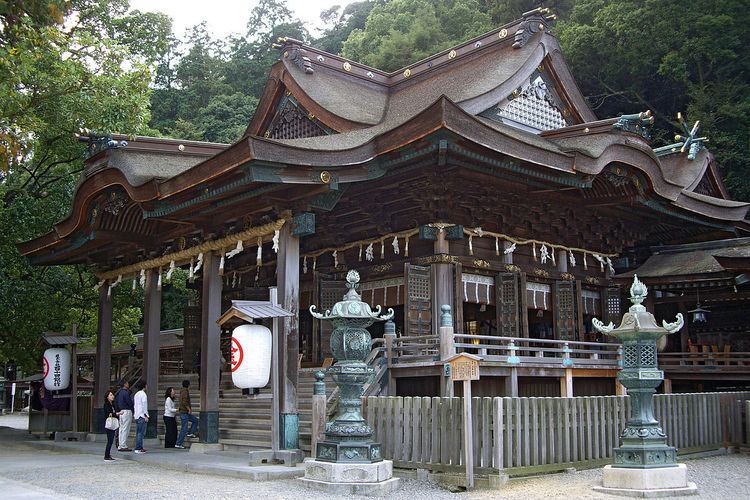Phone +81 877-75-2121 | ||
 | ||
Similar Konpira Grand Theatre, Kotohira Station, Ritsurin Garden, Great Seto Bridge, Mt Zozu | ||
Kotohira shrine kagawa japan
Kotohira-gū (金刀比羅宮) (also known as Konpira-dai-gongen (金比羅大権現), Konpira-san (こんぴらさん), or Konpira Shrine in English) is a Shinto shrine in the town of Kotohira in Nakatado District, Kagawa, Japan. This shrine is patron of sea ship transport and sailor.
Contents
Located at 521 metres (1,709 ft) halfway to the top of Mount Zōzu, the shrine stands at the end of a long path, with 785 steps to the main shrine and a total of 1368 steps to the inner shrine. Since the Muromachi period, pilgrimages to the shrine became popular, and even today usually hundreds of visitors in a day climb the steps of Mount Zōzu. On the way to the shrine is a sake museum, stores, and stones with the names of donors carved in kanji.
Before the Meiji period, Kotohira Shrine was also a Buddhist site as well (see honji suijaku).
History
It is said to have been founded during the 1st century.
The principal kami of the shrine is Ō-mono-nushi-no-mikoto, a spirit associated with seafaring (also referred to as the Buddhist deity Konpira). In 1165 the spirit of Sutoku-Tennō was also enshrined.
Before the Meiji period it was known as Konpira-Daigongen (金比羅大権現), and it stood at the head of the nationwide group of shrines bearing the names Kompira and Kotohira. The ema hall is the site of prayers for safe seafaring.
From 1871 through 1946, Kotohira was officially designated one of the Kokuhei Chūsha (国幣中社), meaning that it stood in the mid-range of ranked, nationally significant shrines.
Treasures
Kompira Shrine has several Important Cultural Properties, including a Heian period statue of the eleven-faced Kannon Bosatsu and four ink paintings by Maruyama Ōkyo.
